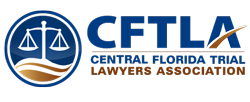Seeking Damages on Your Behalf
Being in any kind of car accident is a frightening experience. But when you are hit by a drunk driver, you have the potential to face serious injuries. If the alleged drunk driver is charged with a DUI causing injury, they could face years of jail time and hefty fines. Victims can seek compensation for their injuries by working with an experienced drunk-driving accident attorney on our team.
Accident victims who suffer major or minor injuries can accrue expenses like medical bills, property damage repairs, lost wages from missing work, and more. At The Law Office of Jerry Jenkins, P.A., we believe that all accident victims deserve to receive compensation for their injuries and other accident-related expenses. We are confident that with our extensive background in personal injury claims, we can assist you in recovering compensation.
Please don’t feel like you must go through this unfortunate situation on your own. Contact our law firm for a free consultation by calling 407-573-7483.
What Are the Drunk Driving Laws in Florida?
In Florida and most other states, driving with a blood alcohol content (BAC) of 0.08% or more is considered drunk driving. DUI convictions have various penalties, and many depend on the criminal history of the drunk driver.
For a first DUI offense in Florida, defendants must pay hefty fines and complete community services. They may also be required to complete probation and serve time in prison.
For a second DUI offense within five years, defendants must spend at least ten days in jail plus pay hefty fines. Being convicted of three or more DUIs within ten years is considered a third-degree felony and can result in serious criminal penalties.
For a DUI causing death or serious bodily injury, defendants can be charged with a felony. Drunk drivers will often face jail time, probation, hefty fines, and other severe penalties. However, drunk driving accident victims must seek compensation via a personal injury claim unless the defendant is required to pay for damages via the court.
What Are the Most Common Injuries After a Drunk Driving Accident?
Because drunk driving accidents are often severe, many of them cause serious injuries. All car accidents have the potential to be fatal, and many victims suffer catastrophic injuries that cause life-long symptoms.
The most common injuries individuals face after a drunk driving accident include:
- Spinal cord injuries
- Whiplash
- Neck injuries
- Broken bones
- Traumatic brain injuries
- Sprains, strains, and muscle tears
- Skull fractures
- Back injuries
If you have been injured by an intoxicated driver, it is essential to seek medical treatment immediately. Even if your injuries do not seem serious now, some injuries can cause internal damage that is not evident until several hours later. Always keep a record of your medical bills and other expenses you pay out of pocket.
Any crash report taken by law enforcement officers is a valuable piece of evidence, especially if it includes records of your injuries. Ask police officers on the scene for a copy of your police report.
What Kinds of Damages Can You Seek in a Drunk Driving Case?
In Orange County, victims can seek damages for any expenses they have accrued because of the crash. Your specific damages will depend on the severity of the crash and how the crash occurred. However, there are some common damages that many victims seek in a personal injury case.
Below are the most common damages victims pursue in a personal injury claim:
- Property damage repairs
- Medical expenses and medical bills
- Lost wages
- Pain and suffering
- Emotional distress
- Cost of living with a disability
If your loved one was pronounced dead after a drunk driving accident, you may be able to pursue a wrongful death claim on their behalf. Wrongful death cases provide compensation to the surviving family members of a deceased individual. In many cases, offenders charged with DUI manslaughter will serve time in an Orange County jail. Contact our team to learn how you can seek compensation for your loved one’s death.
Who is Liable in a Drunk Driving Accident?
While a drunk driving accident case might seem straightforward, drunk drivers are not the only parties who could be liable in a drunk driving accident claim. Our team will review the details of your case to determine who is liable for your injuries and how to recover compensation.
In Florida, there is a statute pertaining to Dram Shop liability. Dram Shop law stipulates that the liability for intoxicated individuals can include other people or establishments.
The following parties could be held liable for a drunk driving accident case:
- Hosts knowingly serving alcohol to minors
- Establishments like nightclubs, bars, or restaurants
- Other institutions that serve alcohol to recklessly intoxicated individuals
Every drunk driving accident case is different. To learn more about Dram Shop law and how it pertains to your case, contact our law offices today.
How Can a Drunk Driving Accident Lawyer Help Me?
Getting into a drunk driving accident can be a devastating experience. You may suffer severe injuries that impact the rest of your life. Medical bills, property damage repairs, and lost wages from time off work can quickly add up, leaving you and your family members in debt due to an accident that wasn’t your fault. You deserve to seek compensation to pay for your expenses.
Our attorneys at The Law Office of Jerry Jenkins, P.A. have extensive experience representing clients in drunk driving accident claims. We are dedicated to fighting for your rights and holding negligent parties accountable for your injuries. To learn more about our services and receive a free consultation, call our office at 407-573-7483.





